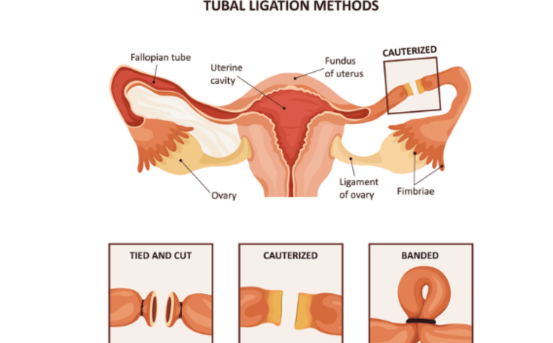Tubal ligation reversal surgery, commonly referred to as “getting your tubes tied,” is a widely used form of permanent birth control. However, life circumstances and personal choices can change over time, leading many women to reconsider their decision and explore the possibility of tubal ligation reversal. Fortunately, advancements in reproductive surgery have made it possible for many women to restore fertility through a safe and effective procedure known as tubal ligation reversal.
Deciding to undergo tubal ligation commonly known as “getting your tubes tied” is a major life choice made by many women seeking a permanent method of birth control. This surgical procedure involves cutting, tying, or blocking the fallopian tubes to prevent eggs from reaching the uterus for fertilization. While it’s highly effective at preventing pregnancy, it’s also considered irreversible by many. However, life is unpredictable. Changes in relationships, personal goals, or simply a renewed desire to expand your family may lead you to question that once-permanent decision.
What is Tubal Ligation Reversal?
Tubal ligation reversal is a microsurgical procedure aimed at restoring fertility by reconnecting the fallopian tubes that were previously blocked or cut during a tubal ligation procedure. When successful, this surgery allows eggs to travel through the fallopian tubes again, making natural pregnancy possible.
Unlike in vitro fertilization (IVF), tubal ligation reversal offers women the opportunity to conceive naturally and potentially have multiple pregnancies without the need for fertility treatments.
Who is a Good Candidate for Effective Tubal Ligation Reversal?
Not every woman is an ideal candidate for a tubal ligation reversal. The success of the procedure depends on several key factors :-
Type of Tubal Ligation Performed
Some methods of tubal ligation are more easily reversed than others. If your tubes were closed using clips or rings, the reversal is typically simpler. However, if a large portion of the tube was removed or burned (cauterized), the success rate may be lower.
Age and Ovarian Reserve
Fertility naturally declines with age, particularly after 35. Your ovarian reserve (the number and quality of remaining eggs) plays a crucial role in the success of reversal and future pregnancy.
Length of Remaining Fallopian Tubes
A minimum length of 4–6 cm of healthy fallopian tube is usually required for successful reconnection and function.
Overall Health and Medical History
Conditions such as endometriosis, pelvic infections, or previous abdominal surgeries may influence your eligibility or success rate.
Male Partner’s Fertility
It’s important to evaluate your partner’s sperm health to rule out male infertility as a potential barrier to conception.
How is Tubal Ligation Reversal Performed?
The procedure is typically performed under general anesthesia and may take 1 to 2 hours. The surgeon makes a small incision in the lower abdomen and uses a microscope and specialized tools to reconnect the severed ends of the fallopian tubes.
In many cases, laparoscopic-assisted microsurgery is used, minimizing recovery time and surgical risks. After the tubes are reconnected, dye is passed through the fallopian tubes to check for patency (openness).
Success Rates of Tubal Ligation Reversal
Success rates for tubal reversal vary based on age, the type of ligation, and the length of healthy fallopian tube remaining. On average, 60–80% of women become pregnant within the first year after the procedure.
Here’s a general breakdown based on age :-
-
Under 30 years :- 80% success rate
-
Ages 30–34 :- 70–75% success rate
-
Ages 35–39 :- 60–65% success rate
-
Ages 40+ :- 30–40% success rate
It’s worth noting that tubal reversal does carry a higher risk of ectopic pregnancy, where the embryo implants in the fallopian tube instead of the uterus. This condition is potentially life-threatening and requires immediate medical attention.
Risks and Complications
As with any surgery, tubal ligation reversal comes with potential risks, although complications are relatively rare when performed by an experienced surgeon. Risks may include :-
-
Infection
-
Bleeding
-
Scarring or adhesions
-
Reaction to anesthesia
-
Ectopic pregnancy
A thorough pre-operative evaluation and postoperative care plan significantly reduce these risks.
Recovery After Tubal Reversal Surgery
Most women recover within 2 to 3 weeks after surgery, although light activities can often be resumed within a few days. Complete healing, including internal tissue repair, may take up to 6 weeks.
Here are a few post-operative tips :-
-
Avoid heavy lifting for 2–4 weeks
-
Follow your doctor’s wound care instructions
-
Resume sexual activity only after medical clearance
-
Track ovulation once you begin trying to conceive
Your surgeon may recommend a follow-up HSG test (hysterosalpingogram) to ensure the tubes are open and functional.
How to Choose the Right Surgeon for Tubal Reversal?
Choosing a highly experienced reproductive surgeon is critical for a successful outcome. When selecting a clinic or hospital, consider the following :-
-
Surgeon’s experience with tubal reversal specifically
-
Success rates and patient testimonials
-
Availability of advanced microsurgical equipment
-
Comprehensive fertility evaluation before and after surgery
-
Clear guidance and counseling for post-surgical pregnancy attempts
Conclusion
Tubal ligation reversal is a life-changing opportunity for women who wish to restore their natural fertility after a sterilization procedure. With the right medical guidance, many women go on to experience healthy, natural pregnancies without the need for assisted reproductive technologies.






















